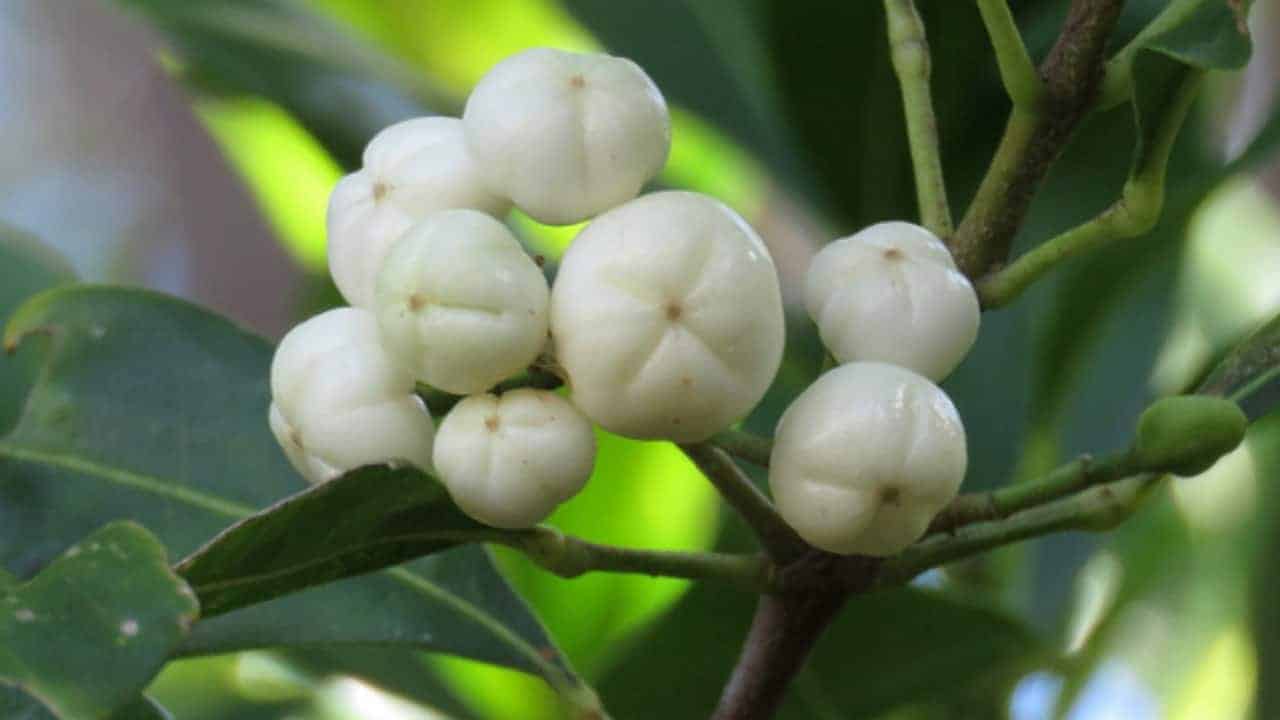White Aspen
Acronychia oblongifolia
White Aspen (also called Yellow Wood or Pigeon Berry) is a rainforest tree producing edible bushfood fruits with a strong citrus flavour and honey notes. It’s endemic to the Daintree region in Queensland, but will grow as far south as Sydney.
White Aspen fruits are white in colour and grow up to 1cm in diameter. They have a crisp texture and an aromatic lemon/orange flavour with hints of eucalyptus and honey. Enjoy them fresh on their own, or add them to salads and side dishes. Cooked, they go well with seafood or poultry, and can be made into preserves, jams, syrups, cakes, sauces, juices and cocktails.
Small white flowers appear from Summer to early Autumn, followed by pale green berries in Winter that turn white then yellow as they mature. White Aspen is an easy harvest — fruits fall right off the branch when ripe. But keep a close watch on these berries, as they are much loved by many native birds, such as the pied currawong, blue-faced honeyeater, green catbird, wompoo fruit dove, satin bowerbird and white-headed pigeon.
White Aspen is a subtropical evergreen that prefers full sun, shelter from strong winds, and rich soils that retain moisture but drain freely. With its dense, dark, leathery green foliage, it’s both a delicious edible and an attractive ornamental.
In rainforest conditions, White Aspen grows to 12-15m in height and 4-8m in width, but expect it to reach half this size in a backyard garden. With adequate care and pruning, you can easily grow it as a screen, a hedge or as an edible balcony plant in a large pot.
How should I prepare my soil for growing a White Aspen?
White Aspen thrives in moist, but well-drained soils. In Western Australia and other regions with sandy soil, add plenty of organic matter beforehand, and mulch the ground before summer. For clay-based soils, till in plenty of compost to improve and condition the texture. Avoid planting in extremely dry soils.
What should I fertilise my White Aspen with?
Use a slow release citrus fertiliser in Spring.
The new leaves on my White Aspen are curled up and covered with wavy white lines. What should I do?
This is caused by an insect called a Citrus Leaf Miner. Remove the affected foliage and spray new leaves with horticultural oil.
What are these bumps on my White Aspen leaves?
These are caused by psyllid bugs, which suck sap from leaves. Psyllids can be treated with neem oil and insecticidal soap according to the product instructions. However, if you’ve only noticed bumps on a few leaves, your White Aspen may no longer require treatment. Simply remove the affected leaves.

Suitable for full-sun

Suitable for part-shade

Provides shade

Suitable for pots

Dimensions:
Height 6-8m
Width 2-4m

Tolerates sandy soils

Fruits from: Year 3

Bird attracting

Attracts bees & insects

Suitable for gaps

Suitable for hedging/screening

